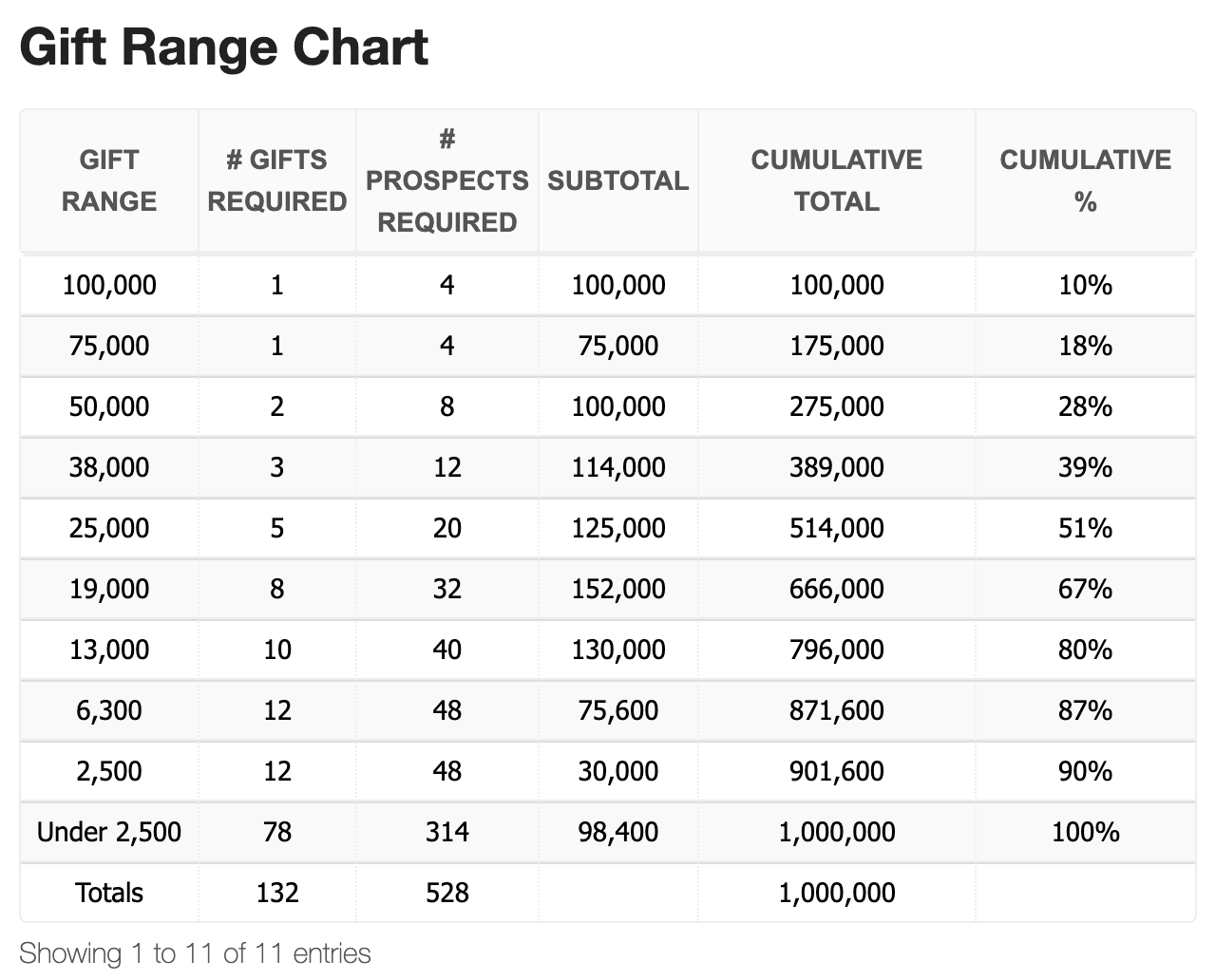What Is a Gift Range Chart?
A gift range chart is an empirical tool based on the sound statistical analysis used to determine how many potential donors you will need to ask to raise a specific amount of money.
A gift range chart is based on the “giving pyramid” that shows most of the money you will raise comes from just a few donors.
Research confirms that typically the top gift will be in the range of 10%–20% of your overall campaign goal.
The top ten commitments, including the first one, will be as much as 50% to 70% of the goal or campaign success can be in jeopardy.
Therefore, you can construct a chart that shows how many donors you need for each level of your funding goal. Below is a gift range chart for a hypothetical $1,000,000 campaign and in this case, you only need to ask 528 folks to reach the goal.

Once you determine the number of actual donor prospects you will need to approach, it becomes much easier to build and implement a realistic campaign plan to identify and engage 528 “like-minded” potential donors using these steps:
- Establish a 10–15 member Campaign Cabinet of your top, existing donors and ask them to help build a file of friends and colleagues from their inner circle.
- In addition, build a list of donors from your existing alumni and any supporting churches, community organizations, and businesses.
This cascading approach helps to create a large pool of like-minded individuals who currently support your school’s mission or will be easier to cultivate to earn the right to ask for major gifts based on your gift range chart.
Gift range charts are NOT created using simple math, such as this: “To raise $1,000,000, we just need to ask 1,000 people for $1,000.” Instead, they are built like a pyramid and clearly identify the gifts needed from a few large gifts to many smaller ones.
Six guidelines for creating a gift range chart:
- The lead gift should be at least 10% or more of your campaign goal or success is at risk.
- Build the chart downwards, cutting the gift size as you go and doubling or tripling the number of donors at each level.
- Remember that roughly 80% of your goal will come from 20% of your donors.
- For each gift, you need three or four donor prospects (not everyone will say yes to the amount you are seeking).
- As you go down the list, you need fewer prospects because people who said no at higher levels may give smaller gifts.
Of course, no campaign ever goes exactly according to the gift range chart.
If you have an established donor base, your chart may be heavier at the top with more major gifts. If you are just developing a donor program, your chart may be bottom-heavy with many small donations.
The key is to stay the course: build your gift range chart, then work your way up and down the chart filling in gifts of all sizes until you reach your goal.

